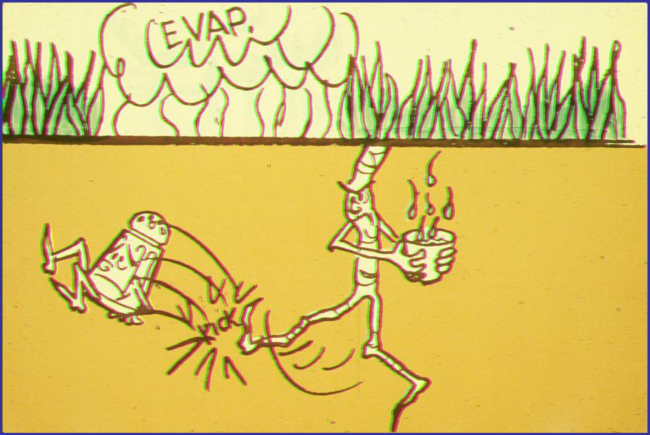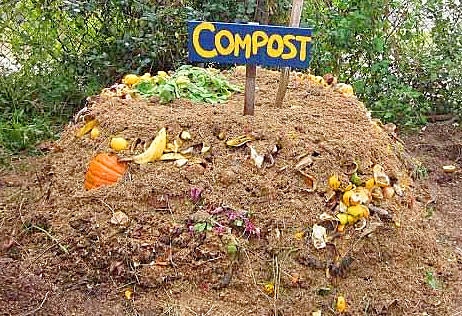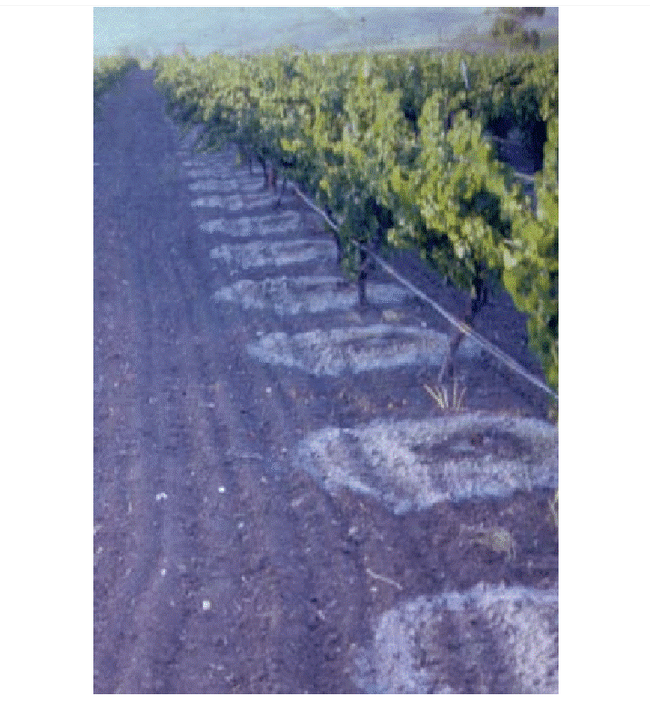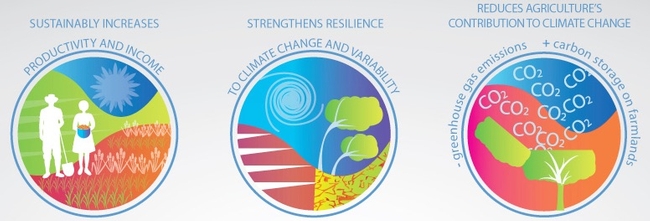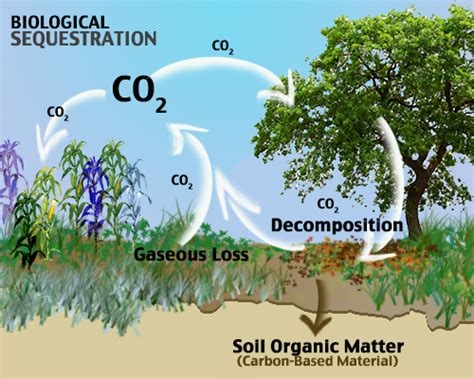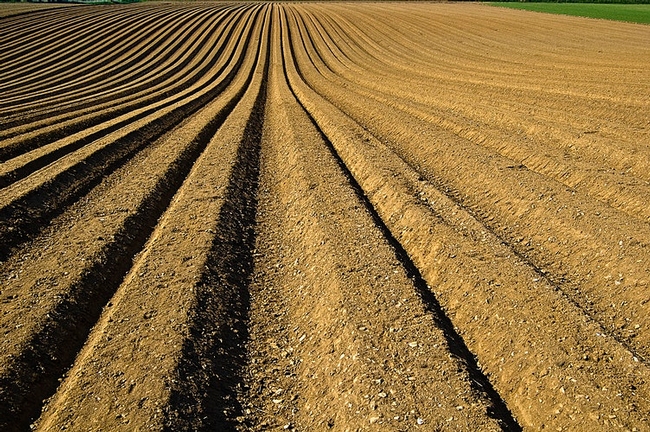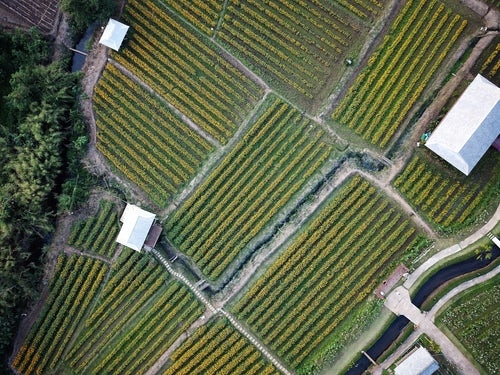- Author: blbaskerville@ucanr.edu [undefined:blbaskerville@ucanr.edu]
Congratulations to the recipients of the CDFA Healthy Soils Program! Nine Mendocino farmers were selected for an award, totaling over $300k going to make Mendocino County soils that much healthier. That is incredible action taken by our NorCal land stewards!
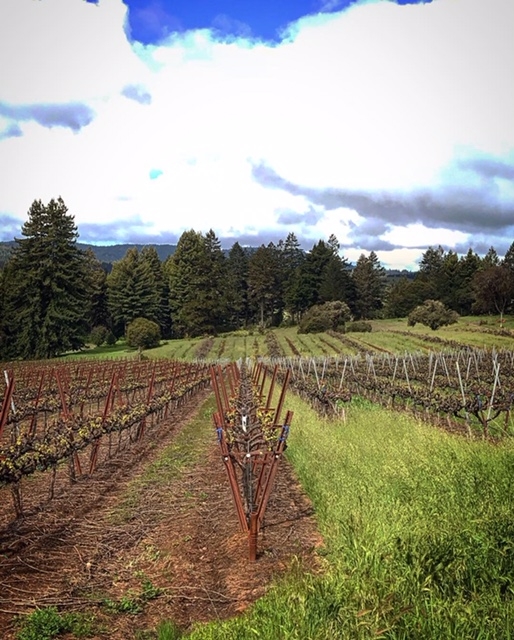
The Mendocino awarded projects are as follows:
- Elke Vineyards, of Anderson Valley, was selected for an award of $42,034.08 to plant hedgerows and a riparian forest buffer on their property, and to include cover crop and compost under their vines. This is designed to reduce run-off, soil erosion, and drift and dust contamination, as well as to improve wildlife and healthy pollinator habitat, and to sequester carbon, add soil vitality, and keep their streams clean and cool.
- Frey Vineyards, of Redwood Valley, was selected for an award of $25,942.77 to plant hedgerows and riparian buffer zones at the edge of their vineyards. This was designed to provide a greater balance of ecosystem functions by sequestering carbon and creating habitat for wildlife.
- Glenn McGourty, County Director of UCCE Mendocino, was selected for an award of $29,246.66 to improve the functioning of his property, where he grows a variety of wine grapes, walnuts, and fruit trees. This project was designed to stabilize the eroding streambanks of this Russian River property by establishing a riparian herbaceous cover of native grasses and by restoring an aging riparian forest buffer of cottonwoods and oaks. In addition, he will be applying a compost/cover crop combo on his vineyards to repair the soils damaged by recent flooding.
- Magruder Ranch in Potter Valley has been selected for an award of $73,500 to apply compost to 26 acres of rangeland used to pasture cattle, sheep, and pigs. They will be working in partnership with Scripps Oceanography Center for Western Weather and Water Extremes to accurately measure the soil moisture holding capacity of their rangelands throughout this project.
- Marie Hoff, a small land owner in Potter Valley, was selected for an award of $2,928.28 to improve the forage of her flock of sheep by integrating fruit trees, applying compost, and planting a multi-species hedgerow on their 10 acre pasture.
- Meadow Farm Community Land Trust, a non-profit located in Fort Bragg, has been selected for an award of $17,765.11 to add compost, mulch, and cover crops to their low-carbon soils. They will also be planting more herbaceous plants to provide habitat for wildlife.
- Navarro Vineyards, of Anderson Valley, was selected for an award of $74,338 to produce their own on-farm compost, which they will spread over 264 acres.
- Red Creek Farm in Potter Valley was selected for an award of $9,300 to apply compost to their pastures and rangeland.
- Strong Roots in Potter Valley was selected for an award of $36,300 to apply compost to the veggie fields and irrigated pasture.
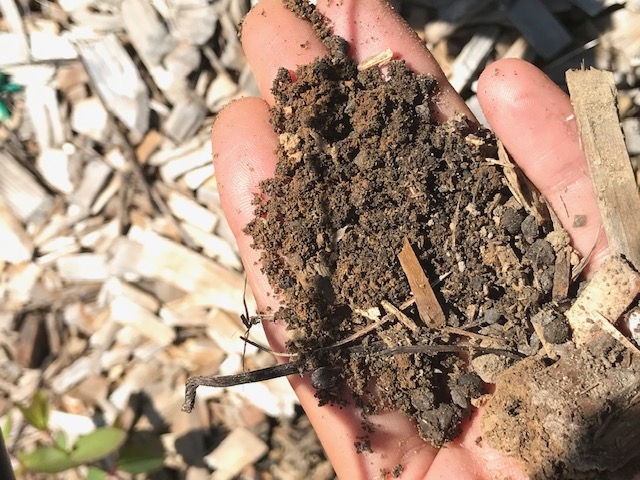
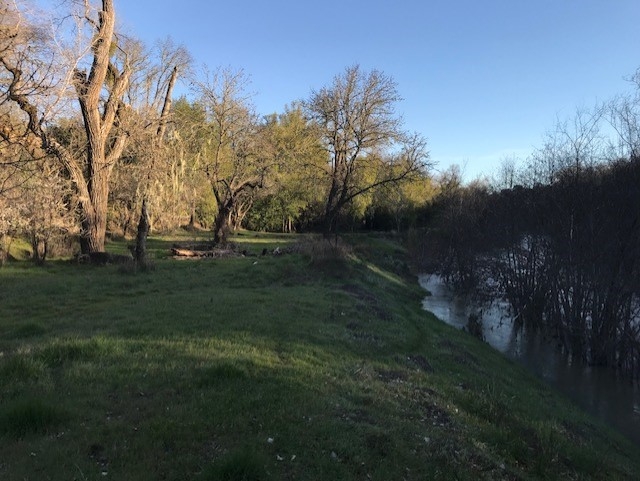
According to Linda Macalwee and Katy Brantley of the Mendocino Resource Conservation District, “In total, practices combined have the potential to sequester almost 1,980 metric tons of carbon dioxide equivalent per year. This would lead to the equivalent of 420 cars being removed from the roads per year. Additionally, implementing these practices has the potential to improve water holding capacity, increase soil organic matter, reduce nutrient inputs, stabilize soil to reduce erosion, attract beneficial insects and pollinators, and save fuel costs by reducing tillage.” Way to go, Mendo farmers!
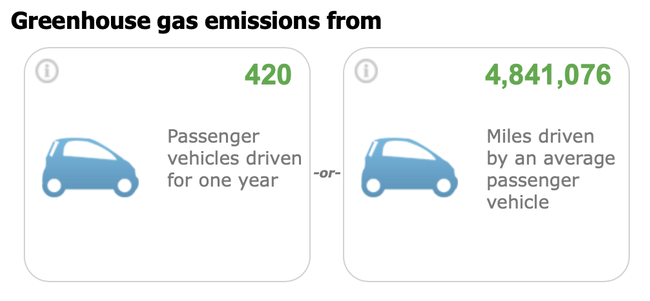
As UCCE Mendocino's Climate-Smart Community Education Specialist, I was able to work 1-1 with several of the awarded farmers on their applications. The experience was very educational, as I had about 5 weeks to get started, learn as much as I could, meet the farmers and discuss their projects, and get their applications in by the deadline in March. While some of our farmers worked independently on their applications, only to reach out to ask questions, others worked more closely with myself and the other Technical Assistance Providers contracted by the CDFA. I found that many of our older farmers needed help navigating the intricacies of the online application platform, while others had more questions and concerns regarding the project's implementation requirements. For instance, qualified winners applying compost to their land are required to apply it 3x over the project duration, a feat which requires hiring labor and renting machinery which isn't covered with the grant funds. This detail was a make or break for certain farmers, but overall it seems compost application was a popular choice amongst our selected awardees.
The Healthy Soils Program is set to have another round of solicitations starting in early 2020. For more information on how to prepare, check out the CDFA website at https://www.cdfa.ca.gov/oefi/healthysoils/. Farmers across CA, no matter the size of their production or hopeful projects are encouraged to apply. Farmers who qualify as a Socially or Severely Disadvantaged Community member, or who provide benefits to these specific communities, will receive extra consideration. Contact your closest UCCE Community Education Specialist for Technical Assistance with your application!
Climate smart agriculture encompasses management practices that increase soil carbon sequestration, reduce greenhouse gas emissions, improve yields and efficiencies, and promotes climate resilience. The California Department of Food and Agriculture (CDFA) supports three funding opportunities in climate smart agriculture: the Healthy Soils Program, the State Water Efficiency & Enhancement Program, and the Alternative Manure Management Program.
In a collaborative partnership, CDFA and UC Agriculture and Natural Resources have teamed up to support 9 community education specialists throughout the state to provide technical assistance and outreach for the climate smart agriculture programs. To learn more and locate a specialist near you, visit http://ciwr.ucanr.edu/Programs/ClimateSmartAg/.
- Author: Alli Rowe
Cover crops in avocados. How do you select species? When do you seed? Do they even work? What benefits do you notice? What are the management issues associated with cover crops? These were all questions addressed at a grower field day seminar entitled, “Avocado Nutrition and Cover Crop Usage” at Pine Tree Ranch. Hosted by the California Avocado Commission and presented by Ben Faber and myself from UC Cooperative Extension, the cover crop portion of the seminar culminated in a grower panel of three cover crop veterans. On the panel was Carl Stucky, a seasoned avocado grower in Carpinteria, Mike Sullivan, an orchard manager who dabbles in both organic and conventional, and Chris Sayer, owner of Petty Ranch in Saticoy. So, what did we learn?
Cover cropping history?
All three of the growers on the panel had been cover cropping for over 20 years. As Carl Stucky put it “Cover cropping is not new. People have been cover cropping for thousands of years.” But how you cover crop and why is completely unique. Chris Sayer started cover cropping to alleviate soil compaction issues that were killing lemon trees. Mike Sullivan was inducted into cover cropping managing Valencia trees suffering from poor soil health and water infiltration. Carl Stucky started cover cropping on a property that suffered from severe soil erosion and loss.
Species selection?
Different cover crops can address different issues. Initially, Chris focused on deep rooted crops such as sugar beets and daikon radish to break up soil compaction. Recently, he has been using grasses such as triticale to build biomass and increase soil organic carbon. Carl aims for a variety of rooting types and diversity of plants to keep beneficial insects around. “I look for a range of responses and benefits, it is all cumulative”, he stated. All growers mentioned mixing it up, aiming for rotating diversity, and using selective covers to address specific needs. Agricultural crop rotation provides benefits such as soil fertility, nutrient cycling, and erosion control. A permanent tree orchard can't be rotated, yet diversity in cover crop selection allows growers to gain benefits of crop rotation.
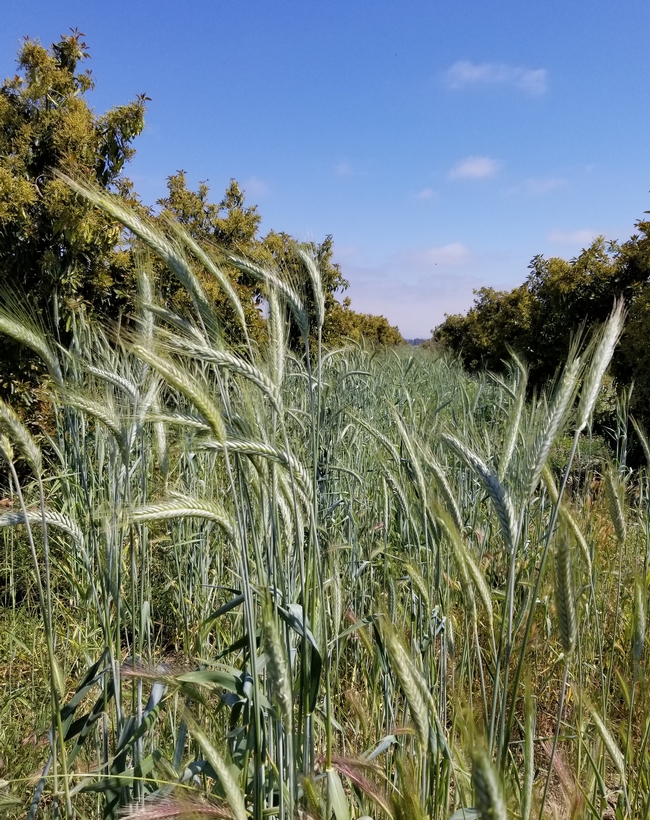
Benefits?
Cover crops provide a multitude of benefits based on species selected and issues being addressed. For growers in Ventura County, improving water infiltration is a noticeable benefit that everyone relates to. All growers reported issues of runoff prior to cover cropping and have seen dramatic improvements in retaining water in the soil. For a drought prone area and sensitive avocado trees, this could be the difference in surviving a July with a 120 degree heat wave or not. Pack out comparisons offer subjective records of yield increases on cover cropped bocks. And notable improvement of soil structure offers a compelling case for cover cropping benefits. Using soil map data, Chris Sayer estimates his orchard was around 2% organic matter prior to cover cropping. After decades of dedicated cover cropping, he now brings soil samples in with organic matter topping 5.7%. That is almost unheard of in Ventura County. All of that organic matter improves soil structure, tilth, water infiltration, and microbial communities to support healthy trees. For a long-term investment in cover crops, it can be tricky to specifically cite one benefit over the other. Mike Sullivan spoke to the challenge of putting a line item on a spreadsheet relating to cover crops saying, “How do you measure change in yield? Well, that is not necessarily why you cover crop. You cover crop because it makes sense.”
Problems?
The word of the day is management. As with anything, if you don't manage appropriately, issues will arise. In the case of avocado orchards, some of these problems can come in the form of irrigation entanglement from greedy cover crops, fat gophers snacking on your greens, thirsty cover crops sucking your water supplies, or providing a nice place for weeds you don't like to grow. These are all considerations and managing cover crops efficiently plays into how prevalent these problems are. As with any system, it is all about trial and error and using a curious mind to manage well.
Take home message.
Cover cropping is a fine balance of art and science. There are guides, resources, and research to inform decision making about what to cover crop and when, but there is no hard and fast answer. The success lies in choosing the right cover crops to address specific issues and managing them as they work within a unique system. Cover crops are successful when the grower is interested in feedback, experimentation, and learning. This could mean manipulating seeding dates based on weather, terminating cover crops based on tree needs, getting creative with seed mixtures that fit the orchard. At the end of the day, it is all about finding creative practices to improve the overall functioning of the orchard and being adaptable to the future ahead.
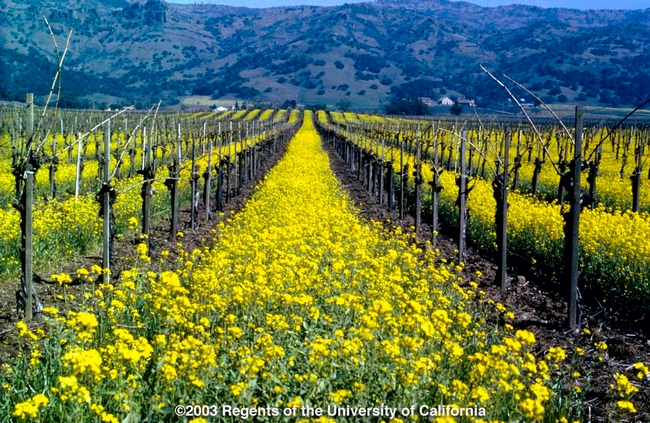
Climate smart agriculture encompasses management practices that increase soil carbon sequestration, reduce greenhouse gas emissions, improve yields and efficiencies, and promotes climate resilience. The California Department of Food and Agriculture (CDFA) supports three funding opportunities in climate smart agriculture: the Healthy Soils Program, the State Water Efficiency & Enhancement Program, and the Alternative Manure Management Program.
- Author: Shulamit Shroder
Can compost help me with my salt problems?
Increasing soil salinity poses an existential threat to agriculture in many parts of California. Due to decades of irrigation and low rainfall, areas like the Central Valley suffer from increasing salinity in both their soils and their groundwater, resulting in diminished crop yields and contaminated drinking water.
According to the nonprofit Central Valley Salinity Alternatives for Long Term Sustainability, the Central Valley has already lost 250,000 acres of farmland to salinity problems. Another 1.5 million acres remain in production but suffer decreased yields due to the negative effects of salinity (CV SALTS, 2017). Like us, plants do not appreciate salty drinking water. Most of them can't thrive if the sodium levels in the soil are too high.
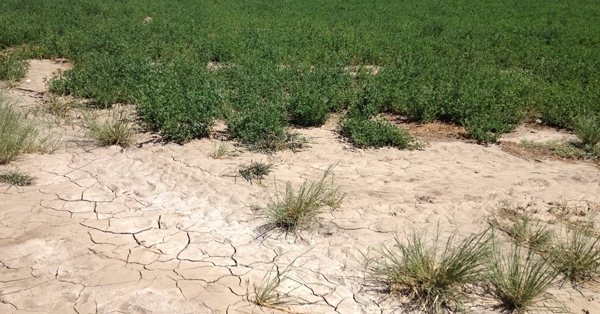
However, this area still produces many of the agricultural products upon which we depend, like nuts, fruits, and vegetables. In order to continue farming, producers in these areas must continue to improve their farming practices. One possible way is by applying compost. This can help to mitigate the terrible effects of soil salinity on crop and soil health.
Scientists have studied the use of organic amendments like municipal solid waste as a means of combating soil salinity since the 1980s and ‘90s. In 1994, Israeli researchers reported that not only did applying municipal solid waste compost improve soil stability and plant growth, but also that amending saline soil withboth compost and gypsum increased yields to the level expected from a normal, non-saline field (Avnimelech et al, 1994).
In 2011, scientists in India published their results after 15 years of treating sodic water irrigation with gypsum, farmyard manure, green manure, and wheat straw. The high sodium water they applied caused the soil structure to disintegrate and the water infiltration rate to plummet. However, the organic amendments all mitigated those effects to varying extents. Farmers thus can add both organic amendments and gypsum in order to improve the yield of their salty soils (Choudhary et al, 2011).
So, if you've got salty soil or irrigation water and gypsum alone isn't enough, then applying compost could be another salt-fighting tool to add to your toolbox.
Plus, the California Department of Food and Agriculture will help pay for it through the Healthy Soils Program.
The most recent round of solicitations closed in March 2019, but keep an eye out for future announcements. In the meantime, check out the UCANR climate smart ag page.
Reach out to your closest Community Education Specialist II with any questions and for help applying for the program.
References
- Avnimelech, Y., Shkedy, D., Kochva, M., & Yotal, Y. (1994). The use of compost for the reclamation of saline and alkaline soils. Compost Science & Utilization, 2(3), 6-11.
- Central Valley Salinity Alternatives for Long-term Sustainability. (2017). CV Salts [pdf]. Retrieved fromhttps://www.cvsalinity.org/docs/committee-document/pubic-education-and-outreach-docs/3963-outreachbrochure-high-resolutionenglish-revised-82718/file.html
- Choudhary, O. P., Ghuman, B. S., Thuy, N., & Buresh, R. J. (2011). Effects of long-term use of sodic water irrigation, amendments and crop residues on soil properties and crop yields in rice–wheat cropping system in a calcareous soil. Field Crops Research, 121(3), 363-372.
- Diacono, M., & Montemurro, F. (2015). Effectiveness of organic wastes as fertilizers and amendments in salt-affected soils. Agriculture, 5(2), 221-230.
- Rao, D. L. N., & Pathak, H. (1996). Ameliorative influence of organic matter on biological activity of salt‐affected soils. Arid Land Research and Management, 10(4), 311-319.
- Author: Alli Rowe
- Author: Shulamit Shroder
What exactly is climate smart agriculture? The Food and Agriculture Organization of the United Nations coined the term climate smart agriculture as “an approach that helps to guide actions needed to transform and reorient agricultural systems to effectively support development and ensure food security in a changing climate.” In short, climate smart agriculture addresses how to manage agricultural systems to meet the nutritional needs of a growing population while both building resiliency to climate change and using agriculture as a solution to our climate crisis.
To be effective, climate smart agriculture must meet three main objectives:
1) Increase agricultural productivity and incomes;
2) Adapt to and build resiliency to climate change; and
3) Reduce greenhouse gas emissions
Climate smart agriculture addresses the risks that agricultural production faces under a changing climate, underscores agriculture's role in solving climate change, and focuses on the importance of intensification of agriculture required to feed a global population.
Agriculture and working lands play a significant role in climate change. According to the EPA's recent inventory, agricultural management practices contribute 8.4% of the United States' greenhouse gas (GHG) emissions. Interestingly, and encouragingly, agriculture can also act as a greenhouse gas sink by removing atmospheric carbon and storing it in plant tissue and soils. Through effective management, agriculture provides a significant solution to climate change.
California's agricultural industry is at extreme risk to the impacts of climate change. Changes in temperatures, precipitation patterns, extreme weather events, and water availability all pose a threat to the viability of agricultural production. Warming temperatures throughout the state will result in a decline of winter chill hours, increased water demand by crops, and the promotion of various pests. Projections show an increased tendency of heat wave events and an increase in duration and intensity of drought. In addition, California expects to see earlier snowmelt, resulting in increased flooding and a decrease in year-round water availability. This is a doom and gloom scenario we can look forward to unless we decide to act today to plan for tomorrow.
The California Department of Food and Agriculture administers 3 programs to help farmers, ranchers, and dairy operators implement climate smart agriculture practices:
-
The State Water Efficiency and Enhancement Program (SWEEP) encourages farmers to install more efficient irrigation systems that decrease their water consumption as well as their greenhouse gas emissions. You can apply for a SWEEP grant for up to $100,000.
-
The Alternative Manure Management Program (AMMP) awards funds - up to $750,000 - to livestock producers who decrease their methane emissions by changing the way that they manage manure.
-
The Healthy Soils Program takes a two-pronged approach. For the Incentives Program, there is $75,000 available per project. There is also the option to coordinate with your local resource conservation district or university on a Demonstration Project, which can award up to $250,000 for the research and demonstration of new healthy soils practices. The Healthy Soils Program encourages the implementation of conservation agriculture techniques that decrease erosion and greenhouse gas emissions, like cover cropping, compost, crop rotation, and mulching.
In October 2018, CDFA and the University of California Agriculture and Natural Resources agreed to work together to enhance access to information and technical assistance for the state's climate smart initiatives. The ten Community Education Specialists scattered throughout the state can help growers and producers with the grant application process, at no cost to the farmer.
Keep an eye out for future announcements about grant deadlines - they all passed in March and April 2019 but should reopen within the next year, pending further funding.
For more information about these programs and for help applying for these grants, contact your local Community Education Specialist:
| County | Contact | Phone | |
| Mendocino | Britta Baskerville | blbaskerville@ucanr.edu | (707) 463-4158 |
| Caddie Bergren | cmbergren@ucanr.edu | (209) 385-7403 | |
| Glenn | Dana Brady | dmbrady@ucanr.edu | (530) 517-8187 |
| Yolo, Solano & Sacramento |
Emily Lovell | ejlovell@ucanr.edu | (530) 405-9777 |
| Santa Cruz | Valerie Perez | valperez@ucanr.edu | (831) 763-8028 |
| Kern | Shulamit Shroder | sashroder@ucanr.edu | (661) 868-2168 |
| Alli Rowe | amrowe@ucanr.edu | (805) 645-1464 | |
| Esther Mosase | enmosase@ucanr.edu | (605) 592-0275 | |
| Imperial | Kristian Salgado | kmsalgado@ucanr.edu |
(442) 265-7700 |
Climate smart agriculture encompasses management practices that increase soil carbon sequestration, reduce greenhouse gas emissions, improve yields and efficiencies, and promotes climate resilience. The California Department of Food and Agriculture (CDFA) supports three funding opportunities in climate smart agriculture: the Healthy Soils Program, the State Water Efficiency & Enhancement Program, and the Alternative Manure Management Program.
In a collaborative partnership, CDFA and UC Agriculture and Natural Resources have teamed up to support 10 community education specialists throughout the state to provide technical assistance and outreach for the climate smart agriculture programs.
- Author: Valerie Perez
Hello,
My name is Valerie Perez and I was hired by the Santa Cruz UC Cooperative Extension office as a Community Education Specialist (CES). I recently graduated from Cal Poly San Luis Obispo, where I received my bachelors in Agricultural Business. The summer before my last quarter at Cal Poly I interned with a large animal veterinarian and found my passion. For now, I am grateful for the opportunity in exploring ways to improve agriculture methods for a changing climate, while taking my pre-veterinary classes.
I briefly want to talk about the main goal of my job here at the UC and how I can hopefully help some of you in the near future. My job is to get growers and farmers familiar and/or to sign up for the Climate Smart Agriculture (CSA) grants that the California Department of Food and Agriculture (CDFA) has.
Now, you may be wondering “What is Climate Smart Agriculture?” and the simple answer to this question is that there is no uniform response. The Food and Agriculture Organization of the United Nations (FAO) defines CSA as an approach that helps to guide actions needed to transform and reorient agricultural systems to effectively support development and ensure food security in a changing climate.
I want to touch on some of the information about the two grants that I am work closely with. For more in depth information about the grants you can visit this link: https://www.cdfa.ca.gov/oefi/
The Healthy Soils Program (HSP) is divided into two different project types, the first being the HSP Incentives Program and the second is the HSP Demonstration Projects. Both project types provide financial assistance for agricultural practices that sequester carbon, reduce atmospheric greenhouse gases and improve soil health.
HSP Incentives Program:
- Receive up to $75,000
- Some of the eligible practices: cover crop, compost, hedgerow, no-till or reduced-till, mulching, and forage/biomass plantings
- Webpage: https://www.cdfa.ca.gov/oefi/healthysoils/IncentivesProgram.html
HSP Demonstration Projects:
- Type A Projects: $250,000
- Type B Projects: $100,000
- Webpage: https://www.cdfa.ca.gov/oefi/HealthySoils/DemonstrationProjects.html
The State Water Efficiency and Enhancement Program (SWEEP) provides financial assistance to farmers and growers who implement irrigation systems that reduce greenhouse gases and save water.
- Receive up to $100,000
- Some of the eligible practices: soil monitoring, drip system, switching to low pressure irrigation systems, pump retrofits, variable frequency drives and installation of renewable energy
- Webpage: https://www.cdfa.ca.gov/oefi/sweep/
I am thrilled to be working for the UC and especially on these CSA grants. I truly believe this a great opportunity for growers and farmers to apply to. I am here to help you guys navigate through the application process, so please do not hesitate to contact me. I really enjoy hearing from you guys!
Respectfully,
Valerie Perez
(831) 763-8028

